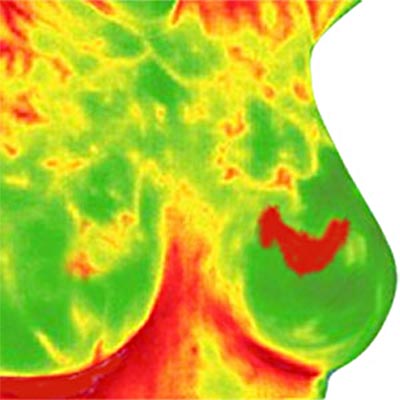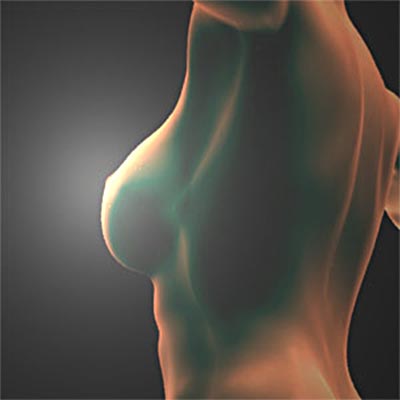Palpable Breast Mass

It is normal for you to be afraid if you notice a lump in your breast. But let not the fear stop you from seeing your doctor right away. The term 'palpable' refers to anything that can be felt by the health care provider or by the lady herself. Such palpable findings could be normal or abnormal.
The term 'mass' or 'lump' is used to describe the texture of your breast. The lumpiness or mass may just be due to normal structures in the breast. This occurs mostly during menstrual cycle along with the changing levels of female hormones - estrogen and progesterone.
In other words, breast mass can be defined as any new or unusual feeling that the tissue in the breast is more solid than it felt before. Perhaps the most common symptom of breast cancer is a detection of a palpable mass. The mass is found to be painful in at least 10 -15% of the patients.
Palpable breast mass and cancer
It is in this context that researches published in the 'Journal of the American College of Surgeons' indicate that some breast cancers continue to be detected as a palpable lump rather than by mammographic screening.
Opines Dr Judy Boughey, MD FACS, of Mayo Clinic, Rochester, "Screening mammograms play an important role in the detection of breast cancer at an earlier stage. We know that mammography does not pick up every breast cancer. However we were surprised at how often breast cancer was detected by a palpable mass."
Another study examined that in women aged between 40 and 69 presenting with breast complaints - at least 40% were of breast lumps and lumpiness and in those complaining of lump, breast cancer was found in 11% of patients.
How to detect palpable breast mass
- After your menstrual cycle, observation of a thickening or lump in the breast or armpit
- A noticeable swelling in the armpit.
- Pain in the breast
- A change in the size or shape of the breast
- Observed changes in the skin of the breast - dimpling in the skin or skin appearing like an orange peel.
- An indrawn nipple, itchy or ulcerous.
- Unusual discharge from the nipples - occasional blood discharge.
- Dilated veins.
- Hardness in the breast is felt.
- Breast becomes visibly flattened.
Breast mass
Lumpiness with the signs and symptoms noted above may be associated with cancer of the breast. But studies reveal that all women are affected by lumpy breast at some time in their lives. Women with lumpy breasts may be diagnosed with 'Fibrocystic diseases'. In such cases, mammograms and ultrasounds may show normal results.
However, it is recommended that all women become familiar with the normal texture and the cyclical changes of their own breasts. Breast self examination (BSE) is a good way for you to examine your own breasts - normally feel and find out in case any unusual changes have occurred and then consult the doctor at an early stage.
Benign breast lumps causes
All breast lumps are not cancerous and only 11% with breast lumps are cancerous. Many breast cancers are localized and can be treated effectively if diagnosed early. Most breast lumps are benign. However, some benign breast diseases increase the risk of cancer in future depending upon your family history and other risk factors. The benign causes of breast lumps that do not increase your risk of breast cancer in future are:
Breast cyst or blocked ducts in your breast that are fluid filled and this is common around the time of menopause. The sac can be easily drained using a needle.
Mastitis is caused due to an infection and inflammation that develops in the breast - this could be hard, red and tender. These are common during breast feeding and can range from simple infections to abscesses that may require regular treatment.
Lipoma is a benign tumor of fat cells and they can occur anywhere in the body. These are soft and painless.
There are some benign breast diseases that can increase the risk of breast cancer in future depending upon her family and medical history. These include:
Fibroadenomas are common in younger women due to hormonal stimulation. They are generally painless and soft and mobile and can be removed if larger than 2 cm.
Intraductal papilloma is another benign tumor of the tissue lining milk ducts and they can be single or multiple. These can cause a discharge of fluid from the nipple and are common in women between the ages of 30 and 50.
Tubular adenomas are again benign tumors of cells of breast glands.
Phyllodes tumor is another rare one but is difficult to diagnose. They have a greater tendency to recur. Rarely, Phyllodes can get cancerous and spread to distant tissues and should be surgically removed if diagnosed.
Malignant breast lump causes
Breast cancer is the second most common cause of death in women. The risk factor for development of breast cancer include age - of first menstruation, first child birth, hormonal factors, family history and history of abnormal breast biopsies.
Breast cancer is first present as a palpable breast lump and this can be felt by pressing a hand on the site and this could be painless. Breast cancer is preceded by a series of changes in your breast and the shape of your breast becomes abnormal, and then cancer spreads to other areas of the body. Approximately, 80% of breast cancers are of ductal origin and 12% are lobular.
Evaluation of palpable lumps
It happens that sometimes the palpable lump cannot be seen on either the mammogram or ultrasound. This may be a 'pseudo lump' formed on a normal breast tissue. However, there could be occasions when a breast lump may also not be seen with either mammogram or ultrasound. In such cases, it becomes important for you and your doctor to regularly track and monitor the lump.
An examination by a breast surgeon is imperative if the lump does not disappear and instead gets larger despite normal mammogram and ultrasound tests. In some cases, a needle biopsy guided by palpation can give information when a breast lump is felt - even if mammograms and ultrasound tests appear normal.
Sometimes you may notice on breast examination that the breast lumps are distinct in their lumpiness. These lumps may stand out from the surrounding tissues. They may vary in size and shape and may be either fixed or movable and may even be different in firmness. These lumps are more easily felt if they are close to the skin.
Similarly, there could be lumps which remain unchanged even after menstrual cycle. These require further investigations. A fine needle aspiration cytology biopsy is done to find out what it is. Fluid filled cysts can be diagnosed and the fluid taken out of the cysts - thereby causing the lump to disappear. In case of absence of fluid, the needle contents can be sent to the laboratory for analysis.
Breast ultrasounds can detect find lumps as well as distinguish between fluid filled cysts and solid lumps. In case of a younger woman, ultrasound would suffice. For older women, both mammograms and ultrasound can be performed.
Breast examination
A complete breast examination includes breasts, nipples and surrounding lymph nodes. The aim of this examination is to detect if any signs are suggestive of breast cancer or any other breast conditions. Clinical examination of breast mass should include size, shape, consistency, mobility and tenderness of breast lump, nature of the breast tissue and presence of any palpable lymph nodes.
Mammograms and ultrasounds
A breast lump may or may not be noticeable to you as normal breast tissues can be quite lumpy in some women and some lumps can be small and located deep in the breast.
A mammogram is a low energy x-ray to image your breasts and reveal any lump. It also provides information on its nature. Special mammogram views help the doctor to closely examine that particular spot as well as all other tissues in the breast to find any abnormal areas that are not palpable.
A breast ultrasound reveals more information than a mammogram in evaluating a breast lump. In case of a simple cyst, no other diagnosis becomes necessary. Complex and solid cysts which cannot be identified by ultrasound require laboratory analysis. In such cases, a needle is pressed into the lump and small pieces of tissues are removed. The entire lump can also be removed by a surgical procedure.
In case of uncertain imaging findings, breast magnetic resonance imaging (MRI) is used to image the breast. This is however, not used routinely due to a high number of false positive results.
Treatment options
In case a breast lump is confirmed as benign, specific treatment may not be necessary. But if the breast lump is confirmed as malignant, then appropriate treatment depends upon the degree of local invasion and whether the cancerous cells have spread to other parts of the body. A computed tomography (CT) scan is done or lymph node biopsy is carried out to ascertain this.
The treatment depends upon the type and stage of cancer as well as the age, health condition and wishes of the patient. Generally the treatment for localized breast cancer involves surgery such as lumpectomy or mastectomy or radiation therapy. In case the cancerous cells have spread to other areas, chemotherapy is advised with medications. Thus, treatment strategies depend upon individual circumstances and choices and are discussed with the treating physician.
Beware: Most women who are diagnosed with cancer of the breast do not fall under any of the special 'high risk' category. If you find a change in your breast, consult your doctor immediately. Do not try to diagnose it yourself. After all, what puts you at risk of getting breast cancer is that you are a WOMAN.
Top of the Page: Palpable Breast Mass
Tags:#palpable breast mass #benign breast mass #detect breast mass #detect breast cancer with palpable breast mass

Cancer Staging and Grading
Mammogram - Breast Xray
Breast Ultrasound
Breast MRI
Breast Augmentation
More on Breast cancer

Stress and Breast Cancer
Breast Density and Breast Cancer Risk
Lower your Breast Cancer Risk
Breast Cancer Myths
Mastitis
Breast Cancer Awareness
Preventing Breast Cancer
Breast Self Exam
Breast Cancer Chemotherapy Treatment
Palpable Breast Mass
Breast Cyst
Breast Cancer Symptoms
Breast Calcification
Breast Cancer Treatment
Mastectomy
Top of the Page: Palpable Breast Mass
Popularity Index: 101,950

